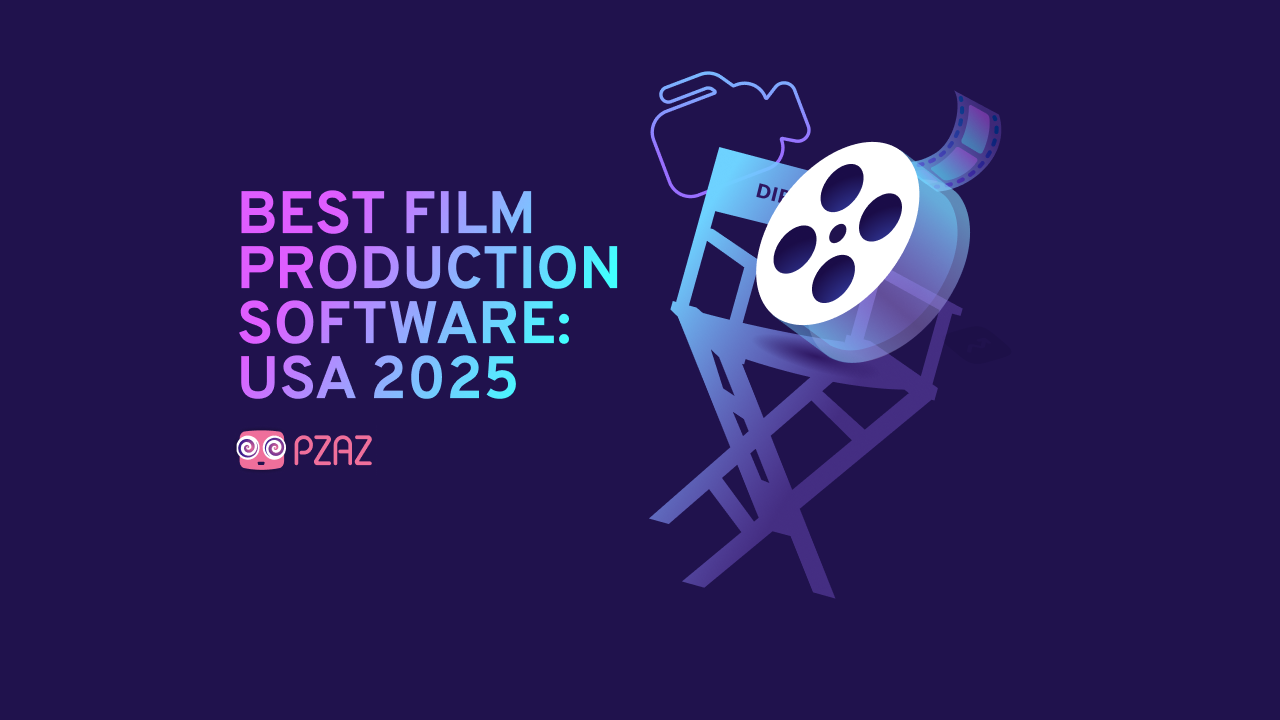Film Crew Hiring & Management Insights: USA 2025

Hiring and managing film crews has always been one of the most demanding parts of content production. It brings together creative ambition, logistical planning, and financial pressure. From finding the right people to keeping everyone aligned throughout a project, crew management requires both structure and flexibility. As the industry continues to evolve, so do the expectations and tools that shape how crews are built and run.
To better understand these shifts, we used AI-driven audience profiling to synthesize insights from online opinions to a high statistical confidence level. Our audience consisted of 4,436 independent filmmakers working across the United States, and the profiling spanned a twelve-month period leading up to March 17, 2025.
The findings reflect patterns in how professionals describe their hiring practices, crew management approaches, and day-to-day production challenges across a range of platforms. Combined, they offer a timely view of how independent filmmakers work, what they prioritize, and where the pressure points are in 2025.
Index
-
- 57% independent filmmakers in the USA use personal referrals to hire their crews
- 25% find hourly rates ineffective for budgeting and payments
- 65% of independent filmmakers say sourcing crews is a significant hiring challenge
- 52% independent filmmakers say equipment mismatches are the biggest challenge in quality and consistency
- For 51% of independent filmmakers, cost is the top factor when hiring
- 84% independent filmmakers use Trello to manage crew workflow
- Improving communication with crews is the top priority for 42%
- 100% independent filmmakers expect the process to become more streamlined and efficient
- Only 8% of independent filmmakers are based in the West
- The State of Crew Management in 2025
- Methodology
How Do You Currently Find And Book Film Crews?
57% independent filmmakers in the USA use personal referrals to hire their crews
Filmmakers continue to use a mix of informal and professional channels when hiring:

According to Statista, 441,700 people worked in the U.S. motion picture and sound recording industries in 2024. When hiring crews from this talent pool, most independent filmmakers in our audience still go straight to people they know. Personal referrals top the list, with 57% saying that’s how they build their crew. It’s fast, familiar, and often the most reliable option when deadlines are tight. Referrals cut through the noise. You already know what you’re getting, and that kind of trust carries weight on set.
Agencies still hold strong too, with 43% relying on them to source crew members. For those juggling multiple projects or working outside their usual circle, agencies offer structure and speed. They help plug talent gaps quickly and keep the hiring process moving, especially when there’s no time to vet people individually.
How Do You Typically Handle Budgeting And Payments When Working With Film Crews?
25% find hourly rates ineffective for budgeting and payments
Filmmakers rely on different payment models when budgeting for crew work:

When it comes to paying film crews, there’s still a gender pay gap, with Zippia reporting that women earn 95¢ for every $1 earned by men. However, regardless of this, our audience is clear about how they handle budgeting and payments across the board.
In 2025, hourly rates appear to be out of favor. 25% of our audience says the model just doesn’t work. There are too many variables, too much unpredictability, and too little alignment between effort and outcome. Project-based pricing runs a close second, with 24% saying it’s their go-to, likely because it’s simple: one number, agreed upfront, with no watching the clock.
Fixed contracts follow at 18%. These are often used for larger shoots or union-backed roles, where clarity and compliance matter most as they lock in expectations from both sides. Many of these are tied to union agreements from organisations like IATSE (the International Alliance of Theatrical Stage Employees), which sets standard pay rates and working conditions for crew across the industry.
Then, there are the collaborators. 17% say they prefer a transparent, team-driven approach to budgeting, which is understandable as it’s less rigid and works well in passion projects or smaller teams. Interestingly, 17% still believe hourly rates are the best option. For some jobs, especially post-production or freelance crew work, tracking time makes sense.
No matter the model, the takeaway is the same: Clear, honest conversations about money are still the heart of a good working relationship in filmmaking.
What Are The Biggest Challenges You Face When Sourcing And Hiring Film Crews?
65% of independent filmmakers say sourcing crews is a significant hiring challenge
Hiring skilled crew continues to be one of the toughest parts of the job:
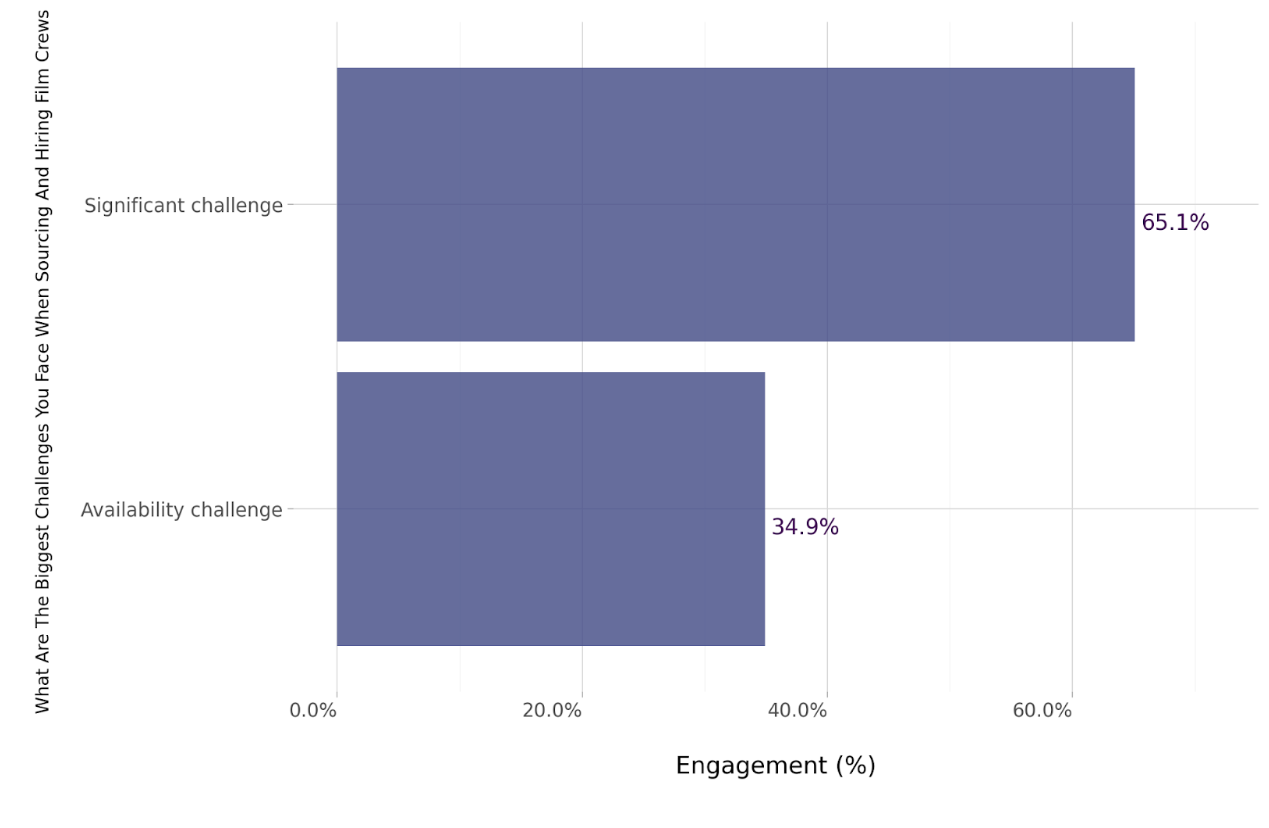
65% of the independent filmmakers in our audience say sourcing crews is a significant challenge, even though the number of people employed in movie and video production has grown by 2.9% annually since 2019. Building the right team is often the hardest part of pre-production, whether it’s a lack of contacts, limited local options, or time pressure. The issue isn’t just finding people; it’s finding the right people fast and within budget.
Availability adds another layer of pressure, and 35% say it’s a recurring challenge. That’s surprising, given the slowdown in U.S. film production. With fewer shoots happening, you might expect more crew to be available, but the reality is probably more complicated. Scheduling gaps, inconsistent project flow, and shifting priorities have made availability less predictable, not more.
What Challenges Do You Face In Ensuring Quality And Consistency Across Different Film Crews?
52% independent filmmakers say equipment mismatches are the biggest challenge in quality and consistency
Keeping quality consistent across different teams is a recurring hurdle for filmmakers:
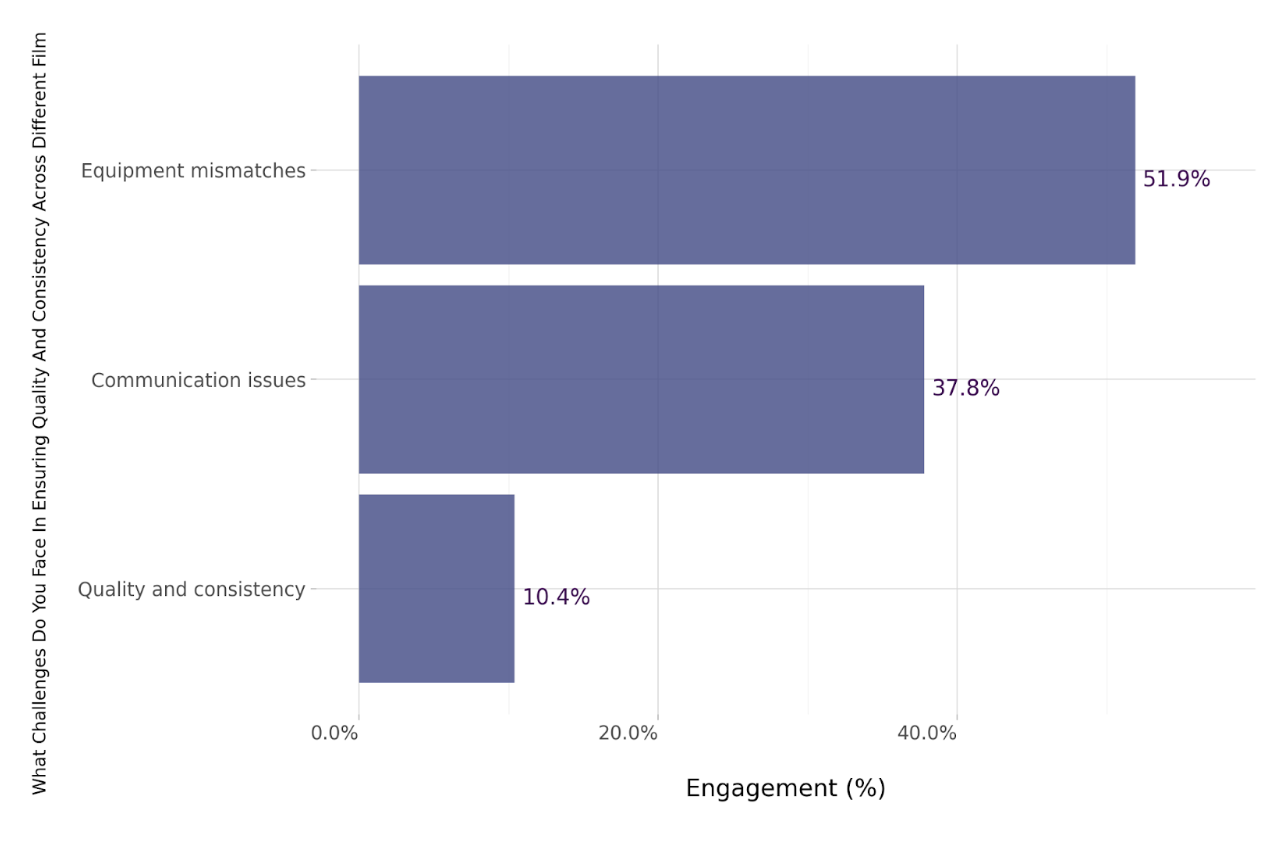
At 52%, over half of our audience points to equipment mismatches as the biggest issue when working with different crews. This likely has less to do with the gear itself and more with how it’s used. Technological tools like 3D previsualisation and real-time rendering are changing how films are planned and produced. When different crews bring varying levels of experience with these technologies, consistency sometimes takes a hit.
Communication issues follow closely, according to 38%. Each crew operates with its own habits and workflow. Without clear direction, key details can get missed. It shows up in lighting setups, audio capture, continuity, and overall execution.
Only 11% flagged quality and consistency directly, which aligns with the idea that these issues are usually symptoms of the real problems: equipment friction and communication gaps.
What Factors Matter Most When Selecting A Film Crew?
For 51% of independent filmmakers, cost is the top factor when hiring
Independent filmmakers must weigh a range of priorities when choosing who to bring onto a project:
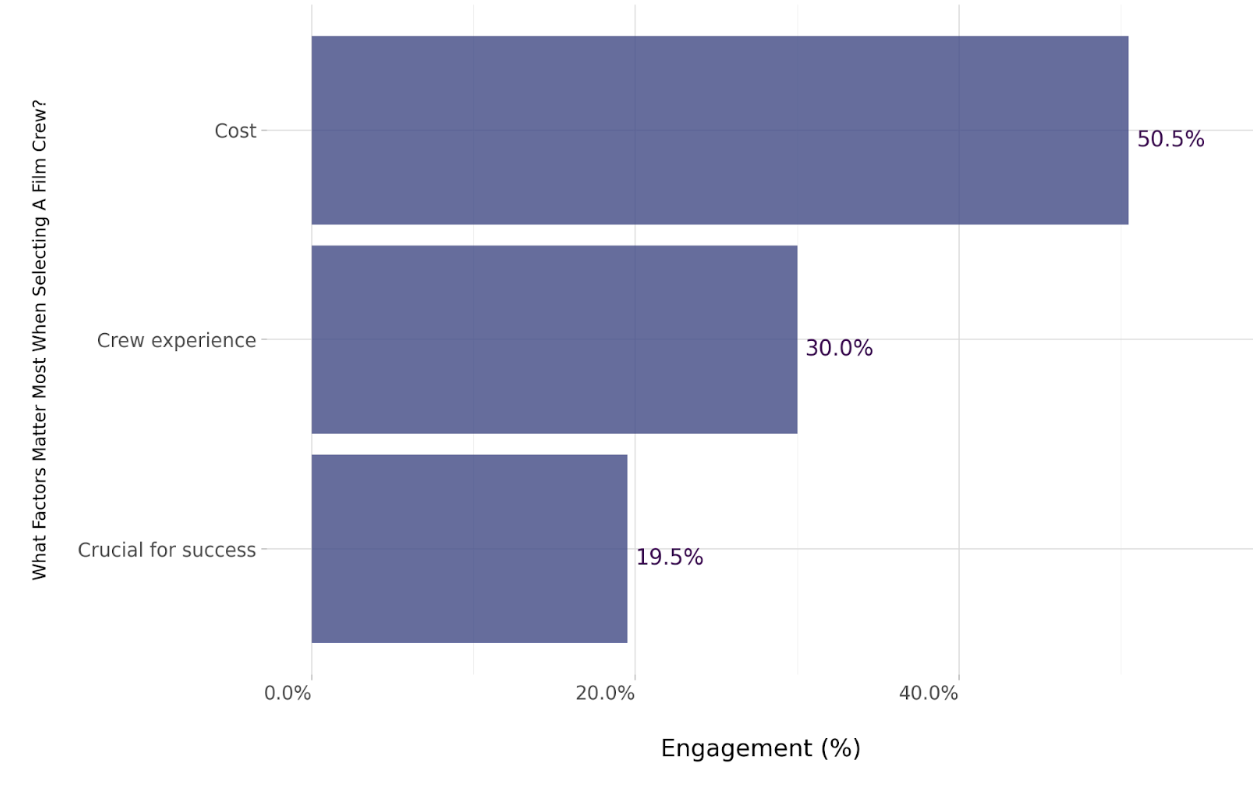
Cost is the biggest driver, with 51% of filmmakers in our study saying it’s the top factor when hiring. That’s no surprise. Most independent films are made on shoestring budgets ranging from $10,000 to $500,000. With limited funds, every hire needs to be smart, as crew rates can consume a large chunk of the budget, so affordability matters from day one.
Experience still matters, though, and 30% say it’s their main consideration. A seasoned crew brings speed, problem-solving, and fewer surprises on set, which can save just as much time and money in the long run.
Interestingly, 20% flagged crew selection as crucial to a project’s overall success. That speaks volumes. Beyond skill or savings, choosing the right team is about trust, chemistry, and the ability to deliver when it counts.
What Tools Or Platforms Do You Use For Crew Collaboration And Workflow Management?
84% independent filmmakers use Trello to manage crew workflow
Staying organized during production means finding the right tools to keep everyone on track:
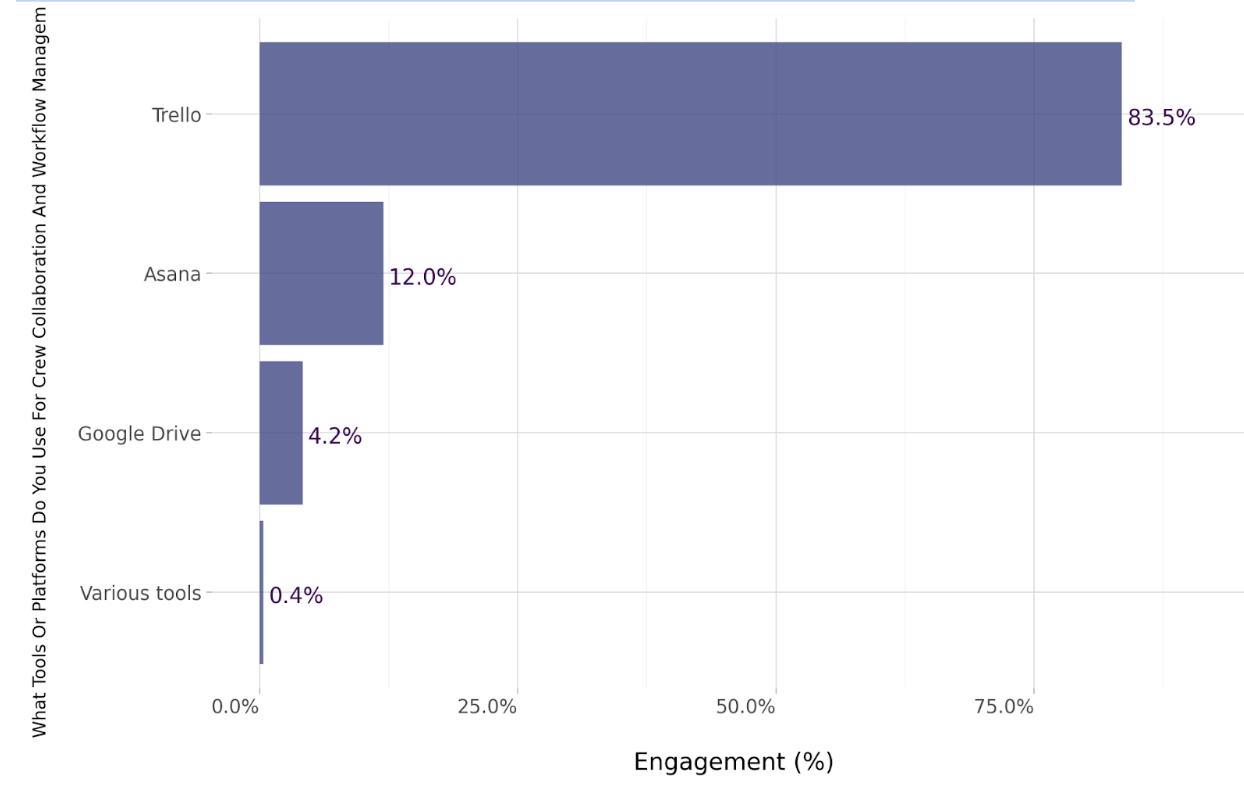
Trello dominates the field, with 84% of independent filmmakers saying it’s their go-to platform for managing crew workflow. This visual board system makes it easy to assign tasks, track progress, and keep everyone aligned, especially on fast-moving shoots with lots of moving parts.
Asana takes second place with 12%, offering more structured task management for teams that need timelines and dependencies. It’s a solid choice for producers running multi-phase projects or juggling overlapping schedules.
Google Drive, at just 4%, is mostly used for file sharing rather than full project management, while fewer than 1% said they use various tools, suggesting that most filmmakers prefer to keep their workflow consolidated within a single platform.
If You Could Improve One Aspect Of Hiring And Managing Film Crews, What Would It Be?
Improving communication with crews is the top priority for 42%
Filmmakers are focused on two key areas they’d like to improve in the crew hiring and management process:
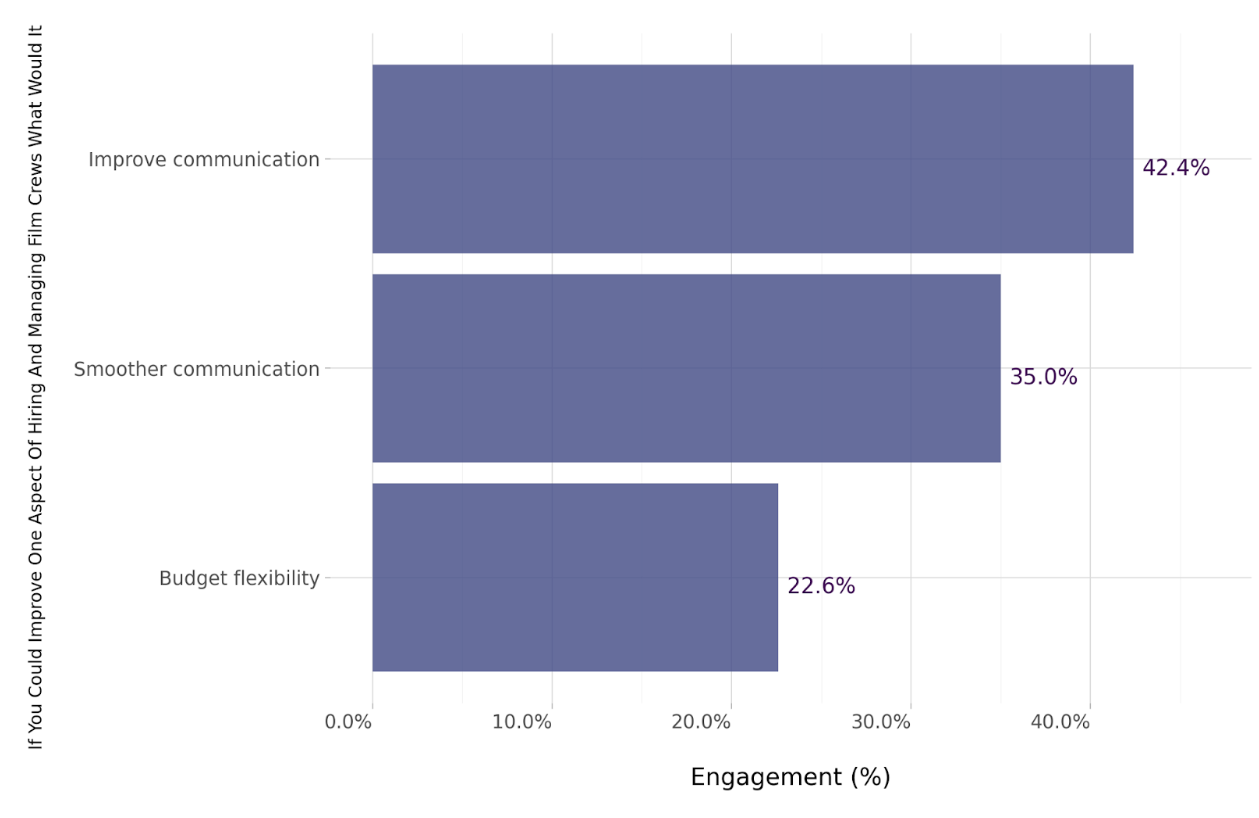
Communication tops the list, with 42% of independent filmmakers saying it’s the one thing they’d improve in the crew hiring and management process. Another 35% backed that up, choosing smoother communication as their top priority. That’s a combined 77% calling for better clarity, quicker feedback loops, and fewer crossed wires on set.
It’s not hard to see why. Film crews are fast-moving, multitasking teams, and when instructions aren’t clear, delays pile up. The Los Angeles Times has reported that mental health support is becoming more common on film sets, as stress and burnout remain ongoing concerns for crew members. In that kind of environment, clear communication is essential.
Budget flexibility came in at 23%, pointing to the pressures of managing talent, time, and tools with limited funds. Hiring great crews is only part of the challenge; keeping them aligned, informed, and responsive is where the real work begins.
What Trends Or Changes Do You See In The Future Of Hiring And Managing Film Crews For Content Production?
100% independent filmmakers expect the process to become more streamlined and efficient
Filmmakers are in full agreement about the direction crew management is heading:

All of our audience said the same thing. 100% pointed to a more streamlined, efficient future. But that doesn’t just mean faster emails or slicker tools. The shift is deeper than that.
Industry trends point to smaller, more agile teams supported by cloud-based collaboration. A recent study published on ResearchGate highlights how Agile-style methodologies are being adapted across media and content production environments. The focus is on improving flexibility, collaboration, and team responsiveness. These approaches align closely with what filmmakers now describe as their ideal future: leaner teams, tighter coordination, and tools that reduce friction instead of adding to it.
Where Is Your Company Primarily Based?
Only 8% of independent filmmakers are based in the West
Independent filmmakers are working from a range of locations across the country:
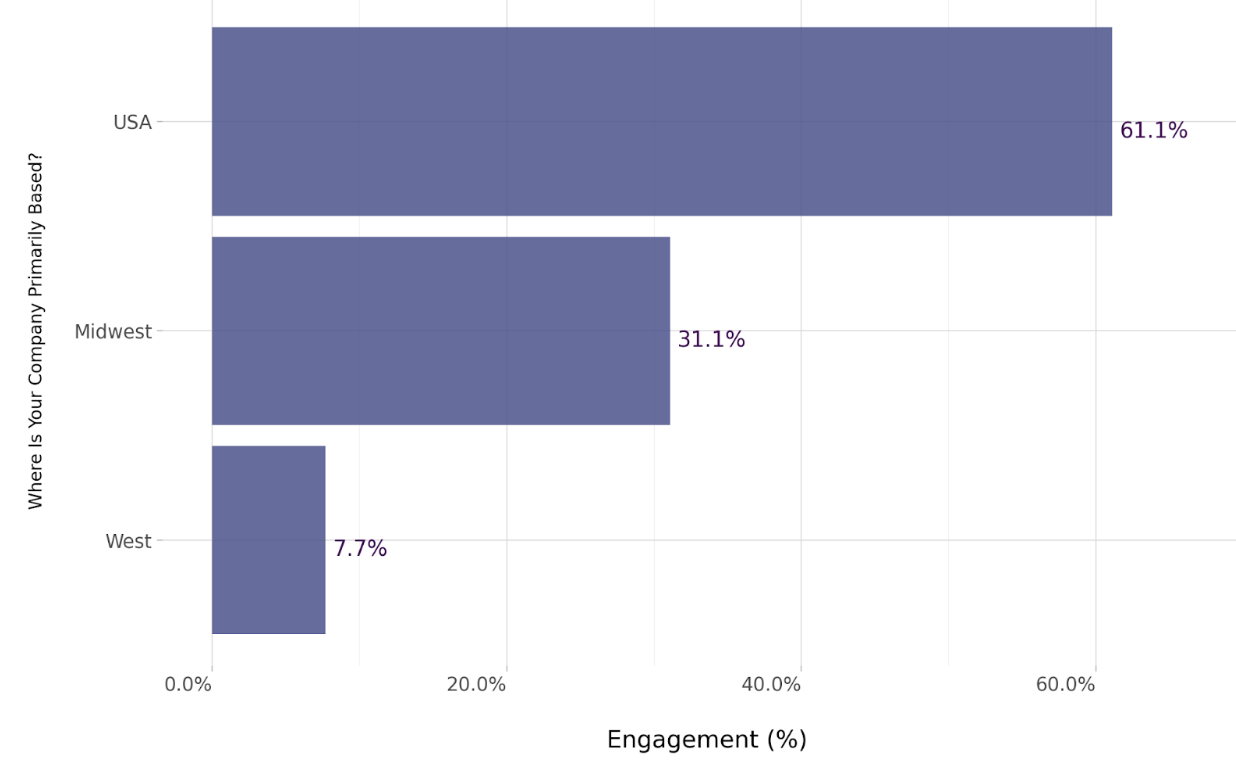
All of our audience in this study is U.S.-based, but 61% listed “USA” as their company’s primary base. That likely reflects companies operating nationally or without a fixed regional focus. Among those who did give a specific location, 31% said they’re based in the Midwest and just 8% in the West.
That last figure may seem surprisingly low, but it aligns with what’s happening across the industry. According to The Hollywood Reporter, filming in Los Angeles is at its lowest level in years. High costs, permitting issues, and tighter budgets are pushing productions to other states and countries offering better incentives. L.A. still holds cultural weight, but it no longer holds the majority of the work. Independent filmmakers are setting up shop where it makes the most sense, and right now, that’s often outside the traditional hubs.
The State of Crew Management in 2025
Unpacking the data from over 4,000 independent filmmakers reveals a clear shift in how film crews are being hired and managed. Across the board, there’s a growing push for better communication, smarter budgeting, and more reliable collaboration. Referrals remain the dominant hiring method, but many are calling for new tools and approaches that support speed, clarity, and cohesion on set.
Filmmakers are working with leaner teams and tighter resources, which makes efficient crew management more important than ever. From planning to post-production, the priority is no longer just about who you hire. It’s about how well that team can work together, stay aligned, and deliver under pressure.
Methodology
Sourced from 4,436 independent filmmakers in the US via X (formerly Twitter), Reddit, Bluesky, TikTok, and Mastodon (including Facebook Threads). Responses are collected within a 65% confidence interval and a 27% margin of error. Engagement estimates how many people in the location are participating. Results are based on what people describe online — questions were not posed to the people in the sample.
About the representative sample:
- 59% of independent filmmakers in the US are under the age of 44
- 57% identify as female
- 76% are based in the Pacific
- The highest majority (34%) earn between $40,000 and $80,000 annually
Best Film Screenwriting Software US in 2025
Find out what independent filmmakers want most in screenwriting software—from AI tools and cloud storage to collaboration features and bold design—and see how creative needs are shaping the future of writing platforms.
Best Film Production Software: USA 2025
Find out what filmmakers value most in their software tools, from editing support to progress tracking and post-production help, and learn why Pzaz is the ultimate creative partner in bringing your stories to life.


